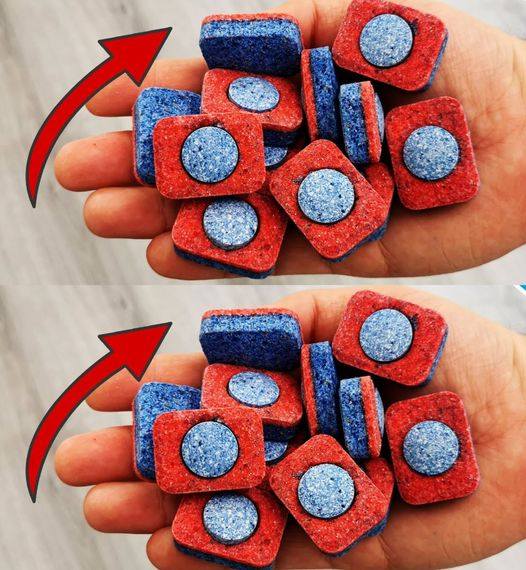ADVERTISEMENT
My Mother-in-Law’s Dishwasher Pellet Trick: How I Got a Year’s Supply for Just One Packet
When it comes to household hacks, some tricks are so simple, yet so effective, that they seem too good to be true. One such hack comes from my mother-in-law, who has a unique way of saving on dishwasher pellets—even though she doesn’t own a dishwasher. And the best part? Thanks to her clever method, I’ve managed to stock up on enough pellets to last a whole year, and all for the price of one packet!
In this article, I’ll share her genius trick with you and explain how you can take advantage of it too, saving money and making your home smell fresh all year long. Let’s dive into the details of how my mother-in-law’s dishwasher pellet trick works and how it can benefit you!
How a Dishwasher Pellet Hack Works Without a Dishwasher
You may be wondering, “How does someone without a dishwasher benefit from dishwasher pellets?” It turns out, dishwasher pellets aren’t just great for cleaning dishes—they have other, surprising uses around the house that can help you save both time and money.
The Trick: Use Dishwasher Pellets for Cleaning Household Items
While dishwasher pellets are designed to clean your dishes, they can also serve other purposes in your home. Here are some ingenious ways my mother-in-law uses dishwasher pellets, and why they’re worth buying, even if you don’t have a dishwasher:
- Cleaning and Freshening Garbage Disposals If you’ve ever had to deal with a smelly garbage disposal, you know it can be quite unpleasant. My mother-in-law uses a dishwasher pellet to freshen up her garbage disposal. By running the disposal with a small amount of water and dropping a pellet inside, the powerful cleaning agents help break down grease and grime, leaving your disposal smelling fresh.
- Refreshing Stale Washing Machines Have you noticed a musty smell in your washing machine? This is often due to detergent build-up and trapped moisture. By tossing a dishwasher pellet into your washing machine and running a short cycle with hot water, it helps dissolve any detergent residue and freshen the machine. It’s a quick and easy way to prevent moldy odors from developing in your washer.
- Cleaning Coffee Makers Over time, mineral deposits and coffee oils can build up in your coffee maker. A dishwasher pellet is the perfect size for cleaning your coffee machine. Drop one in the reservoir, add water, and run a brewing cycle. This cleans out any old coffee residue and mineral deposits, leaving your machine cleaner and your coffee tasting better.
- Cleaning Pots and Pans Pots and pans with stuck-on food or grease can be difficult to clean, even with the strongest scrubbers. A dishwasher pellet can be used to soak the pan. Simply fill the pan with warm water, drop a pellet inside, and let it sit for an hour. The pellet will help loosen grime and make scrubbing much easier.
- Deodorizing Shoes and Other Items For stinky shoes or other items that are hard to freshen up, toss a dishwasher pellet inside and let it sit overnight. The pellets absorb odors, leaving everything smelling fresh. They can even be used to freshen up gym bags, diaper pails, or trash cans.
The Ultimate Trick: How One Packet Can Last a Year
Here’s where the magic happens: My mother-in-law buys a single packet of dishwasher pellets and uses them strategically throughout the year for all the tasks mentioned above. A typical packet of dishwasher pellets contains 20-30 pieces, but with her smart approach, one packet can go a long way. Here’s how she makes it last:
- Use Just a Small Amount: For most cleaning tasks, you don’t need to use the whole pellet. For example, when freshening up the garbage disposal or cleaning the washing machine, half a pellet is usually enough. This allows her to stretch the packet far longer than most people would think.
- Multiple Uses: Instead of buying separate cleaning products for each chore, she uses the same packet of dishwasher pellets for multiple jobs around the house. Since they’re designed to clean tough grime and odor, they work on a variety of surfaces.
- Storage for Later: If she hasn’t used all the pellets by the time the year is over, she simply stores them in a sealed container to preserve their freshness for the next year. The remaining pellets continue to work just as well when needed.
By using just a small amount for each task and finding multiple uses for the pellets, she’s able to extend the life of the packet for a full year. This is a
